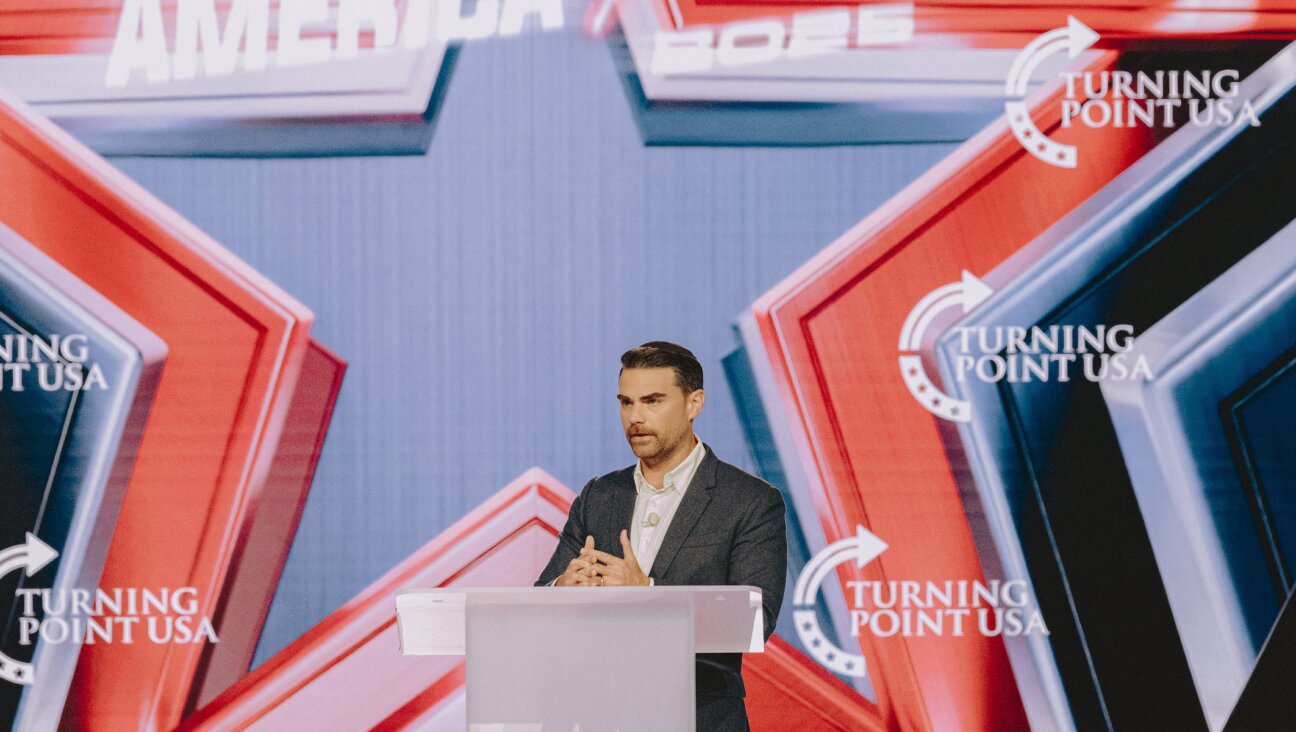How Gil Steinlauf Chose ‘Personal Torah’ Over One True One

Graphic by Angelie Zaslavsky
A respected Conservative clergyman, Gil Steinlauf, senior rabbi of Washington’s Adas Israel Congregation wrote his congregants a moving letter shortly after Yom Kippur. In it, he announced that he and his wife of 20 years, Batya, would be divorcing. That alone would have been surprise enough for his congregation, considering the model marriage, complete with three children, that he and his wife (also a Conservative rabbi and the head of an office of the local Jewish Community Relations Council) had forged. The Steinlaufs’ union had earned the respect and admiration of Adas Israel’s members.
What compounded the jolt, though, was the revelation of what had brought about the decision to divorce. In the husband’s words: “I have come to understand that I am gay.”
Even as an Orthodox rabbi and someone who considers living a homosexual life to be a sin, I could not help but feel anguished by the couple’s “heartbreaking decision,” in Rabbi Steinlauf’s words. He went on to characterize his marriage as one in which he and Batya, a wonderful woman… shared a love so deep and real,” in which, together, they “built a loving home with our children founded principally on the values and joys of Jewish life and tradition.”
Reading those words, I hurt for the husband, I hurt for the wife and I hurt for the children.
But I also came to better grasp, and to bemoan, the yawning gulf between the Orthodox understanding of life — which I would argue is the historically Jewish one — and the contemporary take on what it means to have been entrusted with existence.
That chasm became apparent from another sentence in the rabbi’s letter. “The truth is,” he wrote, “that like anyone else, I have no choice but to live with the reality, or personal Torah, of my life.”
“Personal Torah.” What a jarring phrase, at least to ears like mine. Judaism for millennia has been predicated on the concept of Jews bending their personal wills to the will of God, of defying “realities,” not succumbing to them. The Orthodox world still hews to that foundational concept, given voice in our ancestors’ declaration at Sinai “We will do and we will hear” — which the Talmud understands as accepting the Torah’s laws even in the absence of our own understanding or our abilities to personally relate to them. In truth, most Jews, on one level or another, live that ideal. That is why they still circumcise their sons.
I don’t doubt for a moment that Rabbi Steinlauf has indeed faced a difficult struggle with same-sex attraction for many years. That says nothing bad about him, and his orientation is not his fault. But it is his challenge. And the Jewish response to challenge is to meet it. In the spirit of the Torah, the original one, not the “personal” one we might choose to write for ourselves.
And he, in fact, did that, by marrying, fathering children and being a loving husband and dad. No small accomplishment, especially facing what he did, and experiencing the pain he must have felt in denying a powerful predisposition. I cannot judge him; I cannot presume to appreciate another human being’s challenge (and have failed enough, if different ones, of my own). But pain, in the end, is part of life, and each of us is challenged by any of a variety of temptations to pursue paths we know, or are taught by the Torah, we shouldn’t follow. What’s more, alleviating personal pain can cause others even greater pain. Sometimes, it must be acknowledged, the right path is the painful one.
Rabbi Steinlauf references a Talmudic text he finds pertinent to his predicament. It is indeed a poignant one and one that I have, as he has, ruminated over for years, in Yoma 72b.
“Rabbah said: Any scholar whose inside does not match his outside is no scholar…” And Rabbi Steinlauf explains that “Ultimately, the dissonance between my inside and my outside became undeniable, then unwise, and finally intolerable.”
What is particularly noteworthy in that text, though, is its precise wording, something that my revered teacher Rabbi Yaakov Weinberg once pointed out to me. Rabbah does not say, my rebbe noted, that a scholar’s “outside” should match his “inside” — that we should necessarily live lives that reflect our inner “identities” — but rather the opposite.
A Jew, in other words, is to create an “outside” — a lived life —that is consonant with the Torah’s laws; and then to work, perhaps over an entire lifetime, to bring his “inside” into synchrony with that outward, Torah-centered life.
Rabbi Steinlauf, in fact, seems to have achieved that with regard to his orientation for 20 years of meaningful, productive, loving marriage. That he seems to be giving up on his challenge at this point is, to me, a tragedy, for his wife, for his family and, ultimately, for himself. I know that in these personal autonomy-addled times I’ll be called a heretic for saying so, but I pray that Rabbi Steinlauf will reconsider his plan, and serve as a true and powerful example to other Jews facing their own challenges, that is to say, us all.
Avi Shafran blogs at rabbiavishafran.com and serves as Agudath Israel of America’s director of public affairs.















